Because Christmas is coming, I will discuss in this post a Coptic text which deals with the birth of Jesus. A fragment of the work in question is preserved in the Princeton University Library and it is available in Cullen I. K. Story’s English translation.[1] I will show here that the Princeton manuscript is completed by other fragments which are kept in a different location. Even if the additional parts were in their turn studied and partially published by Roelof van den Broek, it has not been noticed that they are in fact pieces of the same Coptic Christmas story.
The aforementioned Princeton manuscript is a sheet of parchment formed of two conjoined leaves (i.e. a bifolio) paginated consecutively 35-36 and 37-38. The text discusses the virgin birth of Christ, the announcement to the shepherds, the visit paid to Jesus by the Magi from the East, and the massacre of the innocents by the hand of Herod.
According to information supplied by Cullen Story in his article and repeated on the website of the papyri collection of the Princeton University, the bifolio was bought by Edmund H. Kase Jr. in Paris from Maurice Nahman, a renowned antiques dealer which I already mentioned in other occasions. It appears that the Princeton University Library purchased the manuscript from Kase in 1957.
Here’s a photo of the manuscript reproduced in Cullen Story’s article:
Story said in his paper that,
“Nahman suggested that other parts of the manuscript might be in the possession of the Pierpont Morgan Library in New York. Upon enquiry, however, it was reported that ‘the piece did not answer the description of any manuscript in the Morgan collection.’”[2]
Even if the Pierpont Morgan Library does not possess other fragments related to the Princeton manuscript, such fragments have indeed survived elsewhere. Thus, the Utrecht University Library owns a series of five parchment leaves which turn out to be codicologically related to the Princeton bifolio.
They were purchased by the Utrecht University Library in 1956, just a year before the Princeton acquisition, from Carl Schmidt, the well-known Berlin based Coptologist. Schmidt, who was also involved in dealing ancient manuscripts, used to visit Nahman’s stores in Cairo and Paris in search for papyri. As a matter of fact, many interesting ancient documents went through the hands of both Nahman and Schmidt (one can think, for example, even just of Medinet Madi Manichean documents). I think it is possible to speculate that the Coptic fragments related to the Princeton bifolio, which Nahman thought to be in the Pierpont Morgan Library, were actually the Utrecht leaves formerly possessed by Schmidt.
The Utrecht leaves represent pages 31-34, 41-42 and 67-70 of the codex to which they belonged. This means that the Princeton fragments published by Cullen I. K. Story partially fill the lacuna between pages 34 and 41:
pages 31-32: Utrecht 1
pages 33-34: Utrecht 2
pages 35-36: Princeton AM 15960 P, fol. 1
pages 37-38: Princeton AM 15960 P, fol. 2
pages 41-42: Utrecht 3
pages 67-68: Utrecht 4
pages 69-70: Utrecht 5
Roelof van den Broek[3] studied the Utrecht fragments and recognized that the pages 67-70 belong to a Coptic homily dedicated to the Virgin Mary, attributed to Theophilus of Alexandria.[4] As for the other fragments, they have not yet been identified. However, their content suggests that they must belong to a homily which deals with the Virgin and Christ’s birth.
Van den Broek did not publish the entire document, but only pages 41-42, which contain the myth of the Phoenix.[5] He pointed out that the text of the Utrecht fragments is paralleled by two other manuscripts, which are, unfortunately, fragmentary as well. We have therefore three manuscripts, all damaged, of this homily of unknown authorship about Virgin Mary and the birth of Christ.
One parallel narrative spotted by van den Broek is found in six consecutive parchment leaves from the John Rylands Library in Manchester. They cover both the text of the fragments in Princeton, as well as of those in Utrecht, providing us with an additional argument that, although separated by thousands of miles, the fragments come from one and the same manuscript.
[1] C. I. K. Story, “A Coptic Christmas Story, and More,” Princeton University Library Chronicle 55 (1993) 43-62.
[2] Ibidem, 43.
[3] R. van den Broek, The Myth of the Phoenix, According to Classical, and Early Christian Traditions (Leiden 1972) 33-47.
[4] Published in W. H. Worrell, The Coptic Manuscripts in the Freer Collection (University of Michigan Studies, Humanistic Series, 10; New York 1923) 249-322 (Coptic text), 359-380 (English translation).
[5] Van den Broek, Myth of the Phoenix, 44-47.










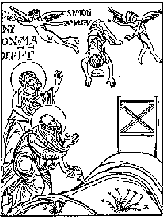




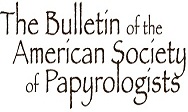
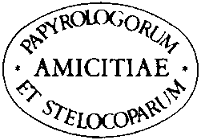
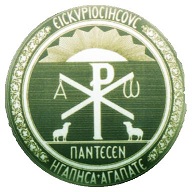





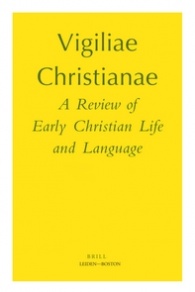






Pingback: Apocryphicity » Blog Archive » Apocryphal Traditions in Homily by Theophilus of Alexandria
WAS THEOPHILUS OF ALEXANDRIA …..THE POPE OF THE COPTIC ORTHODOX
There was no Coptic church at that time (i.e. late fourth-early fifth century).
Theophilus was the patriarch of the Egyptian church. He is venerated as a saint by the Coptic orthodox Christians and Melchites, like all the patriarchs who lived before the Chalcedonian schism.